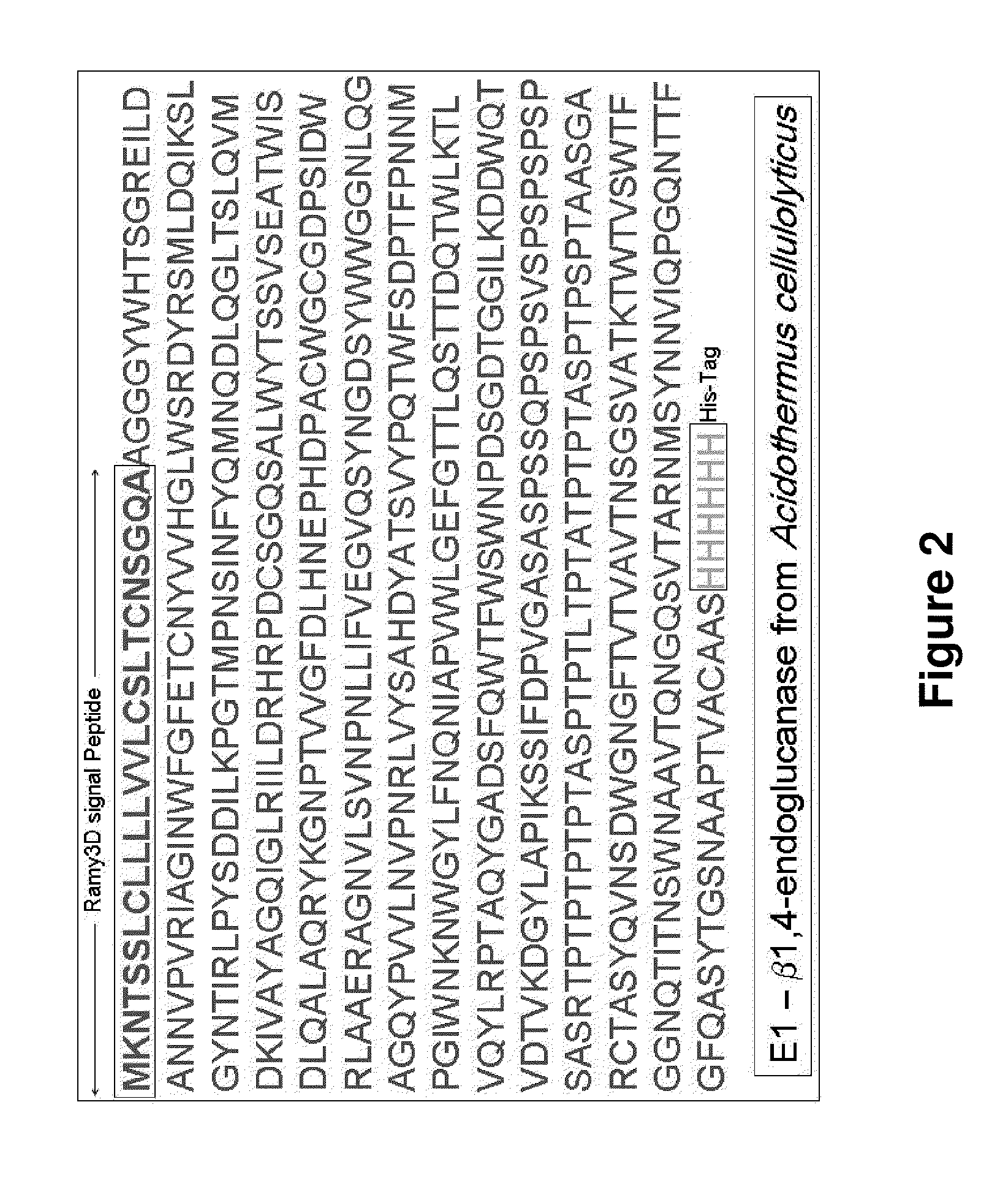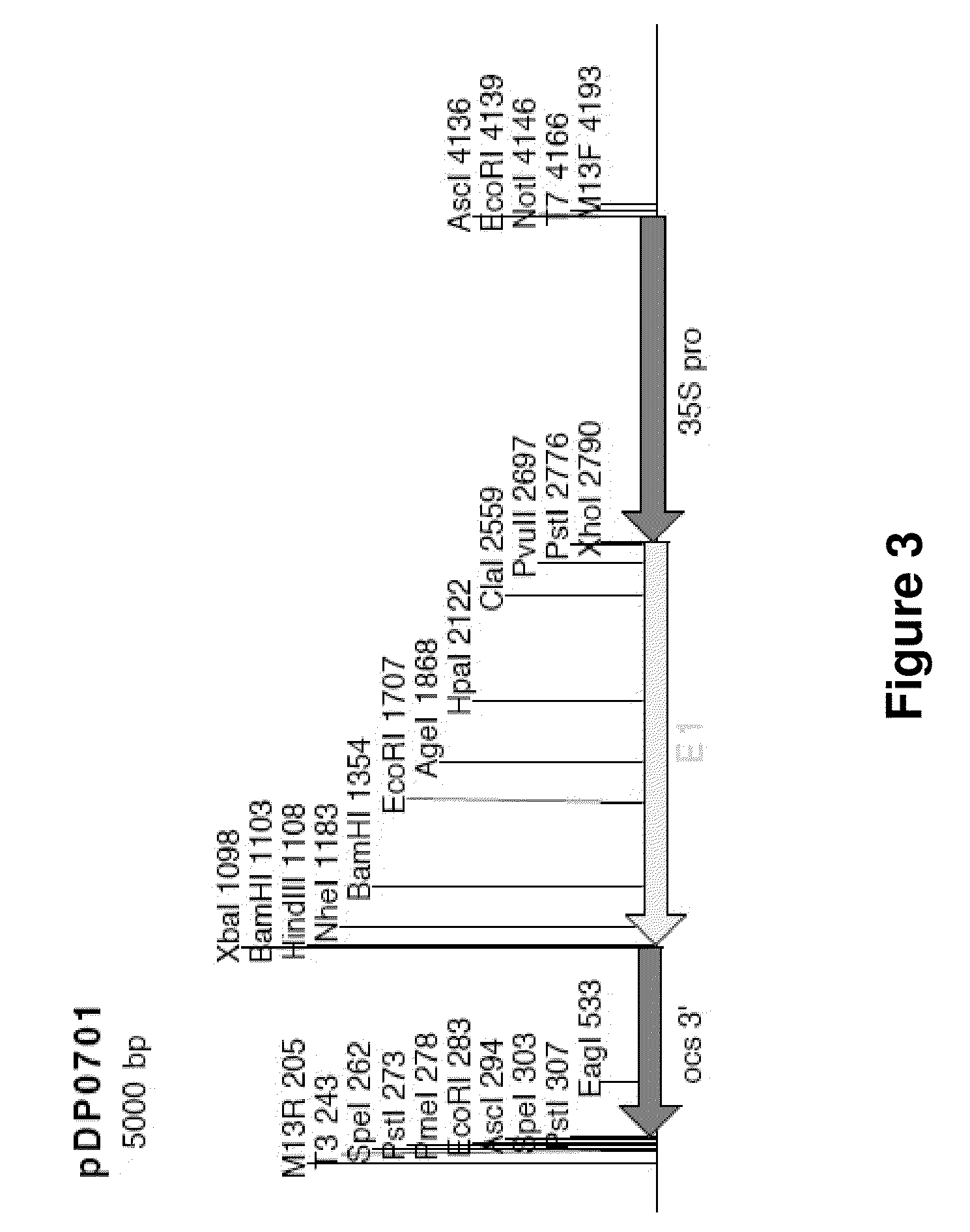Production of cellulase enzymes in plant hosts using transient agroinfiltration
a cellulase enzyme and plant host technology, applied in the field of protein production methods, can solve the problems of high capital cost, large number of bioreactors, and need a synergistic set of enzymes to degrade cellulos
- Summary
- Abstract
- Description
- Claims
- Application Information
AI Technical Summary
Benefits of technology
Problems solved by technology
Method used
Image
Examples
Embodiment Construction
[0018]The following description sets forth numerous exemplary configurations, parameters, and the like. It should be recognized, however, that such description is not intended as a limitation on the scope of the present invention, but is instead provided as a description of exemplary embodiments.
1. Selection of Initial Target Enzyme and Secretion Signal Peptides
[0019]Acidothermus cellulolyticus is a thermophilic bacterium that lives in acidic environments. The β-1,4-endoglucanase E1 enzyme was selected from this organism because its ability to hydrolyze cellulose is inhibited at ambient temperatures, so in planta expression of this gene does not alter the plant's phenotype. Also, the endoglucanase has an optimal activity at pH 5.5, which is approximately the pH of the plant cell apoplast. Furthermore, several other research groups have successfully expressed this enzyme in stable transgenic plants. The sequence for E1 was obtained from the NIH Entrez cross-database search (accession...
PUM
| Property | Measurement | Unit |
|---|---|---|
| time | aaaaa | aaaaa |
| temperature | aaaaa | aaaaa |
| pH | aaaaa | aaaaa |
Abstract
Description
Claims
Application Information
 Login to View More
Login to View More - R&D
- Intellectual Property
- Life Sciences
- Materials
- Tech Scout
- Unparalleled Data Quality
- Higher Quality Content
- 60% Fewer Hallucinations
Browse by: Latest US Patents, China's latest patents, Technical Efficacy Thesaurus, Application Domain, Technology Topic, Popular Technical Reports.
© 2025 PatSnap. All rights reserved.Legal|Privacy policy|Modern Slavery Act Transparency Statement|Sitemap|About US| Contact US: help@patsnap.com



